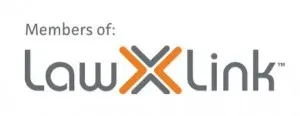Advice to landlord clients in response to COVID-19 and Alert Level 4 status

COVID-19 Level 4 and Landlords
Form of Lease
Before considering the impact of the restrictions imposed by Alert Level 4 on commercial leases, it is important to review the terms of the lease for the premises. Most commercial leases entered into after 2012 are on the 6th edition ADLS lease form. However, a number of leases on the earlier editions are still in place for tenants that have been in occupation of their premises for a long time.
The standard terms of any of these forms of lease may have been amended so the specific lease and any deeds of renewal, variation or assignment need to be checked.
Clause 27.5
The 6th edition deed of lease contains a provision in clause 27.5 to state that if there is an emergency (defined in clause 47 of the lease to include an epidemic), and the tenant can’t access the premises to fully conduct its business because of public
safety reasons (including a prohibited or restricted access cordon), then a fair proportion of the rent and outgoings cease to be payable for the time that the tenant is unable to gain access to the premises.
This clause will apply unless the tenant is an “essential service” which is permitted to remain open during the Alert Level 4 restrictions.
The period starts from just before midnight on 25th March 2020, so in practice, rent and outgoings abate from 26th March 2020. For some businesses, it could be considered that the period starts from Alert Level 3 on 23 March 2020 but given the
proximity of the dates, most parties are applying clause 27.5 from the unequivocal date of 26th March 2020.
Fair proportion
There is little case law to give guidance as to what is a “fair proportion” of rent and outgoings. This is likely to be because there is a general recognition that the parties need to be pragmatic and to work together in these circumstances.
However, there is one case in which the Judge considered the assessment of a fair proportion of rent payable by the tenant pursuant to clause 27.3 of the ADLS 6th edition lease, arising from damage to the premises caused by the 2013 earthquake in the Wellington region.
In that case, the tenant (the owner of a bar in central Wellington) claimed a rent abatement as a large number of windows in the premises needed to be replaced after the earthquake. The Judge allowed the tenant a full abatement of rent for the two months that the tenant’s business was substantially disrupted resulting from scaffolding being erected on the exterior of the building whilst the new windows were installed. The Judge did not allow any abatement for the period of 14 months from
the date of damage until commencement of the works, as there was no evidence that the damage affected the tenant’s business operation from the premises during that time. However, as it was a summary judgment proceeding, the Judge noted that he could not assess exactly how much the tenant may have been entitled to by way of rent abatement as there was no valuation evidence directed to that issue; the two month’s rental abatement was proposed by the landlord at the hearing.
Furthermore, the facts of that case differ from the current circumstances, as the repair works which impacted on the tenant’s use of the premises were undertaken by the landlord and the Judge noted that they were carried out pre-Christmas which
worsened the effect on the tenant’s business, whereas here, the Alert Level 4 restrictions are beyond the control of either party.
It is worth noting that the Judge allowed two months’ full rent abatement even though the tenant was still operating from the premises and did generate some income over that time, albeit that the tenant said the patronage of the bar dropped by over 50%.
Commercial and Practical Considerations
In our view, there are a number of commercial and practical considerations to be taken into account when determining what proportion of rent (if any) should be paid during this time:
- Is the tenant able to generate any income during the lockdown or will it be reliant on cash reserves and/or the government assistance package? The tenant will have significant ongoing expenses including wages/insurance etc during the period. Some consideration could be given as to whether the tenant is able to operate its business remotely due to its computer server being safely housed in the premises.
- Is there anything in the lease that allows the tenant the right to break the lease in the coming months or is there an upcoming right of renewal? Have any earlier renewals been properly exercised and documented? The landlord’s actions now are likely to impact on the tenant’s decision to remain in the premises long term. If the lease has expired without earlier renewals being documented, the terms of the lease provide that the tenant remains in occupation under a “holding over” which can be terminated by either party on 20 working days’ notice.
- Are the premises purpose-built for the tenant or could they be easily re-let if the tenant ceases to be financially viable and moves out?
- Does the landlord have mortgage payments to cover? Will the bank agree to a reduction in loan repayments/any mortgage relief?
Clause 27.6
The first schedule to the 6th edition lease contains a “no access” period. Clause 27.6 allows for either party to terminate the lease if the premises are unable to be accessed for the period specified. The default period provided in the lease is nine
months unless the parties have agreed an alternative timeframe. It is unlikely that the Alert Level 4 restrictions will remain for nine months but all leases need to be checked and the relevant dates noted.
Insurance
Although tenants often hold business interruption insurance, and the landlords hold “loss of rents” insurance, there are often exclusions and restrictions to these policies (including epidemics) and these policies are usually tied to a claim under a material damage policy, which will not apply as the premises are not damaged. We do recommend clients contact their insurers however, to check the terms of any policies.
Earlier Edition Leases
Even if the tenant occupies the premises under an earlier ADLS lease edition which does not contain a “no access” provision, a landlord should consider granting the tenant a rent abatement, particularly if any of the considerations listed above are
applicable.
Conclusion
A landlord needs to consider the long term relationship with the tenant in negotiating any proportion of rent payable by the tenant during the Alert Level 4 restrictions. As the tenant does not have any access to the premises to fully conduct its business, the proportion of rent (if any) payable by the tenant is likely to be small. Payment of outgoings by the tenant (particularly security services) are reasonable however, to ensure that the tenant’s chattels are kept safe during this time.













